PLC Hardware Explained


In this article, we’re going to introduce you to a typical PLC and its associated hardware.
First of all, let’s start with the term PLC, and talk about what it means.
PLC is short for Programmable Logic Controller.
PLC industrial applications
A PLC consists of a computer with several additional hardware pieces that are a part of it or can be attached to it at any time.
Before we go any further, this is probably a good place to discuss how and where a PLC has been included physically into industrial applications and what it has replaced.
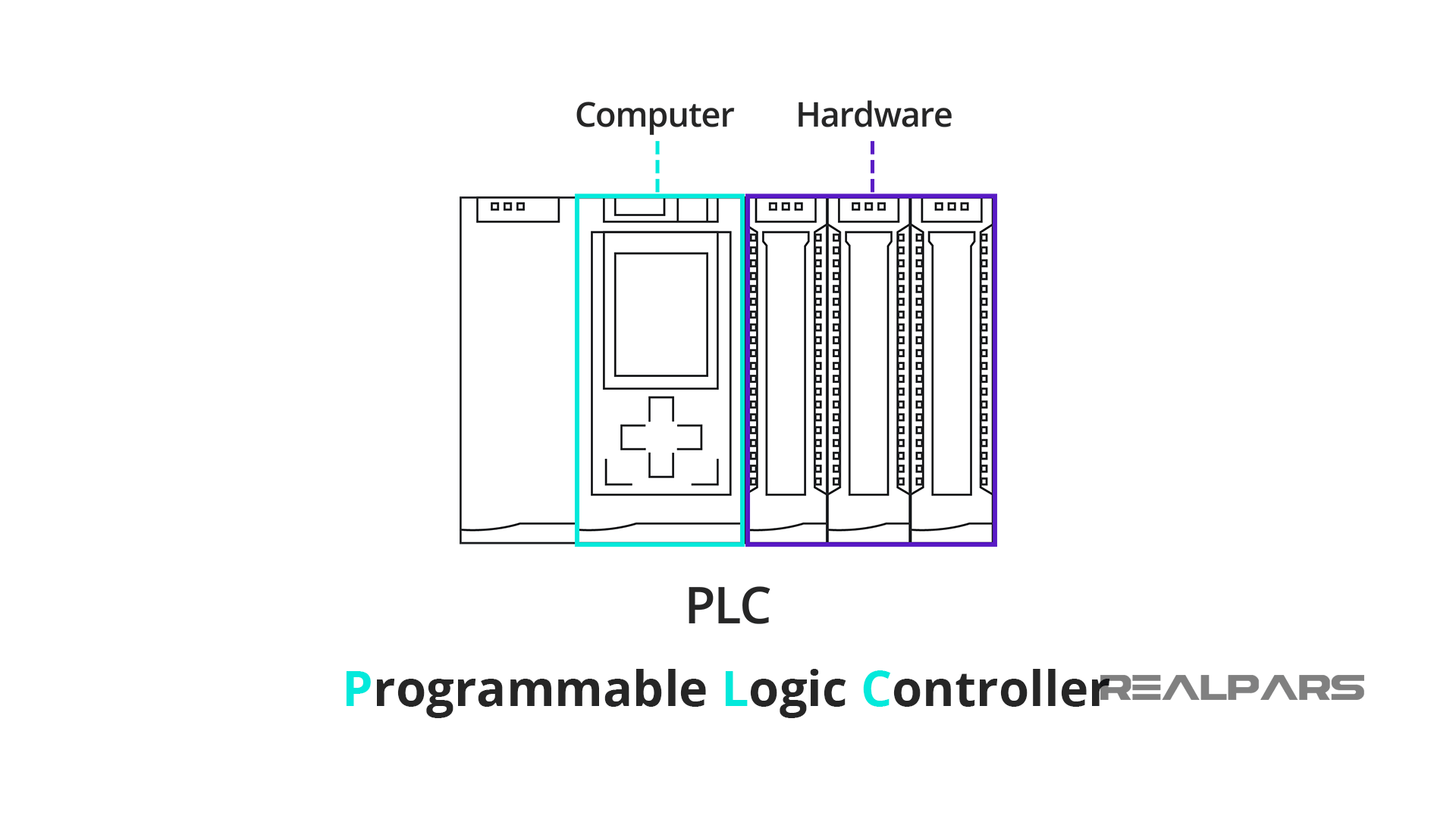
Motor starter – 1960s
Let’s look at a typical motor starter schematic that could have originated in the 1960s perhaps.
Any electrician will tell you that when you push the Start button (stage 1), the M Relay will energize and the Motor will run assuming there are no overloads (stage 2).
The Motor will stay running after the Start button is released because a set of M contacts will seal in (stage 3).
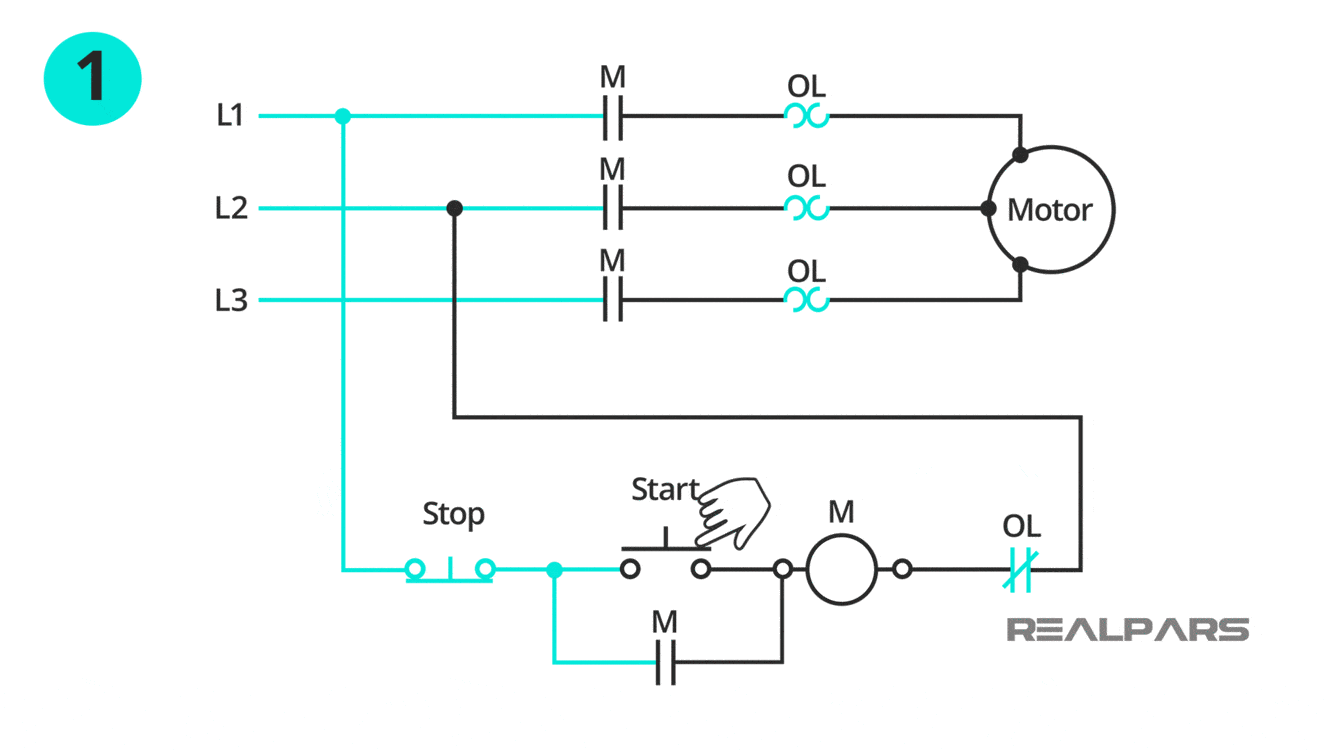
The Motor is stopped by pressing the Stop button (stage 4) thus breaking the electrical circuit for the M Relay (stage 5).

Motor starter – today
In industrial applications today, much of the Motor Starter circuitry is replaced by a PLC. Interestingly, many of the original physical devices are connected to the PLC!
The Start and Stop switches, the OL (overload) contacts, and the M relay are hardwired to hardware modules that are part of the PLC…. More on the hardware modules later…
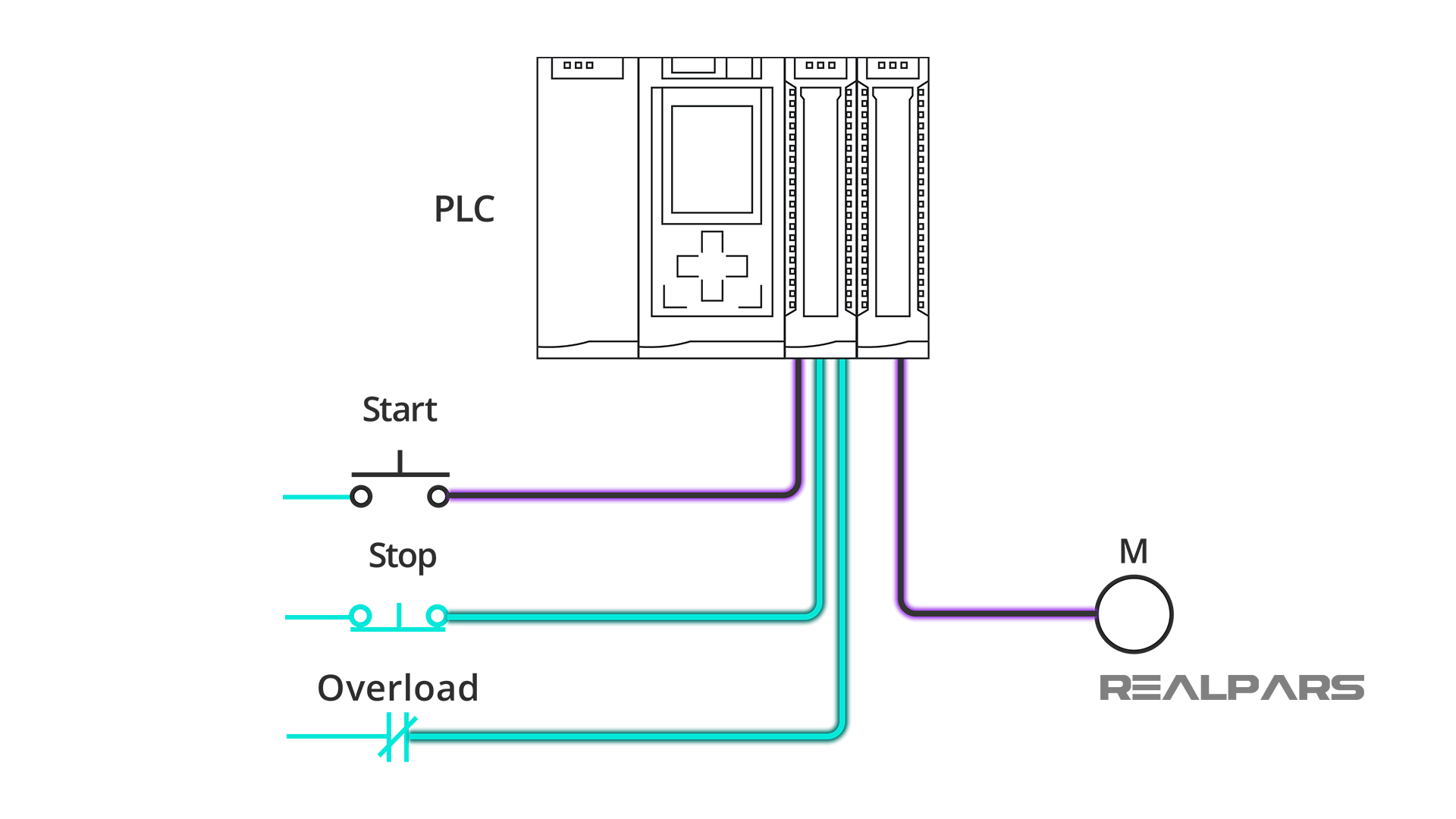
Types of PLC Hardware Components
Alright, now that we’ve got that out of the way, let’s look at what we mean by the term PLC Hardware. The Hardware components of a PLC include the following:
Processor, Power Supply, Input/Output Modules, and a Programming Device.
Let’s look at each piece of hardware, or module one at a time.
1) Power Supply
The Power Supply is connected to AC mains for the supply voltage.
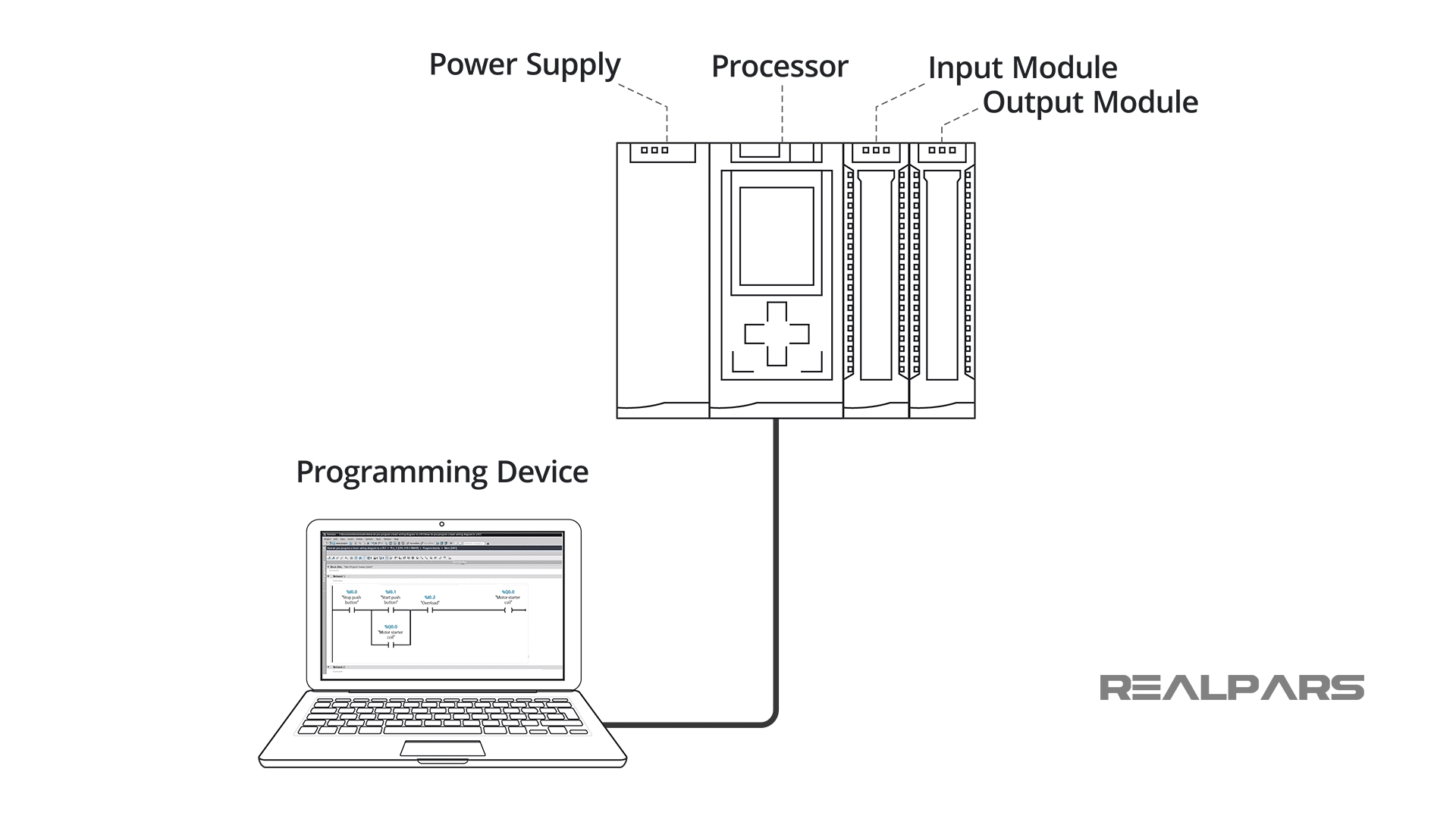
The output of the Power supply is a DC voltage used to power all of the other modules associated with the PLC.
The Power supply DOES NOT provide power for field devices.
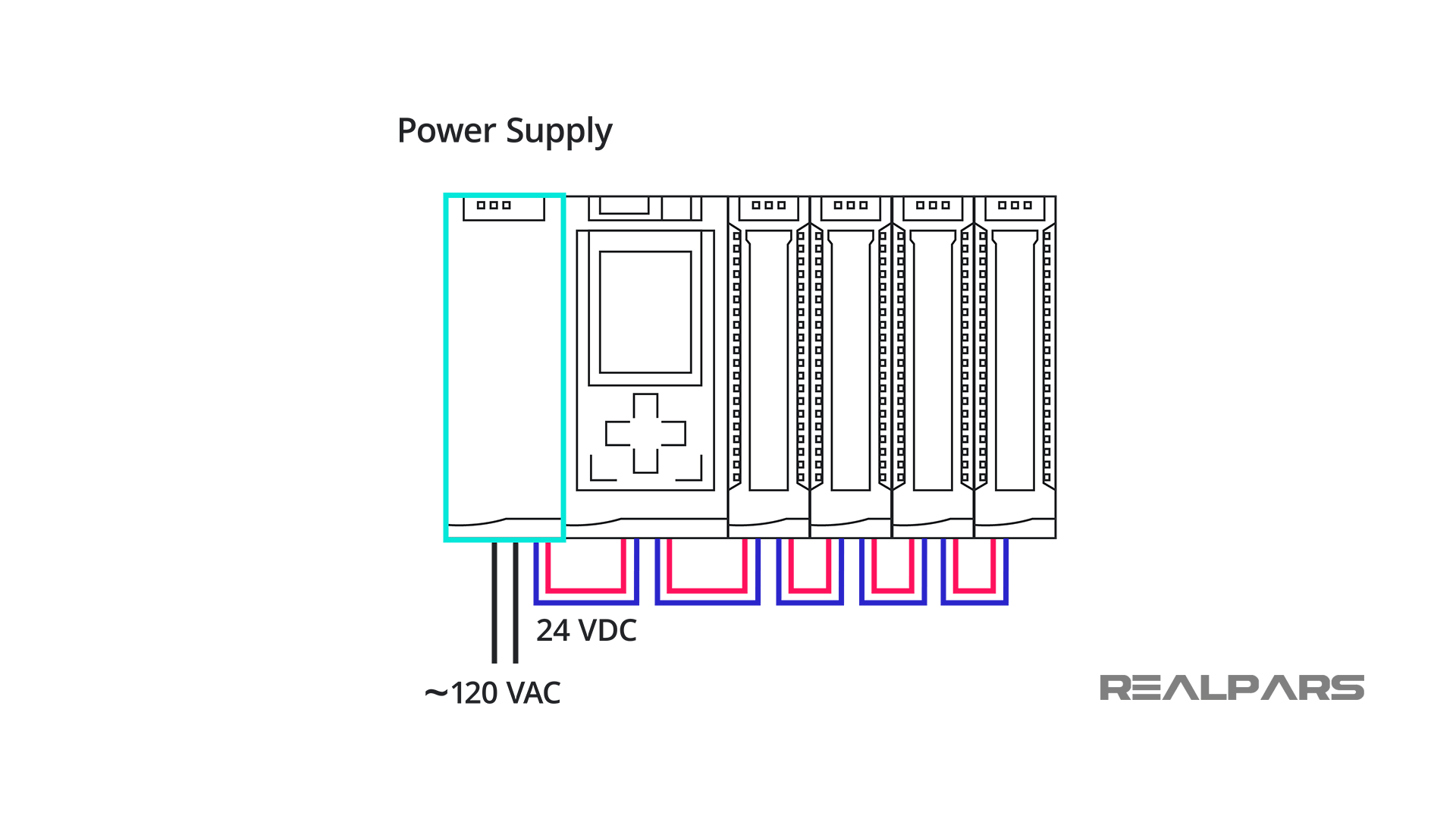
2) Input/output modules
The input/output modules are connected to digital or analog field devices.
Input field devices include switches, encoders, and transmitters for example.
Typical output field devices are relays, lamps, and proportional valves.
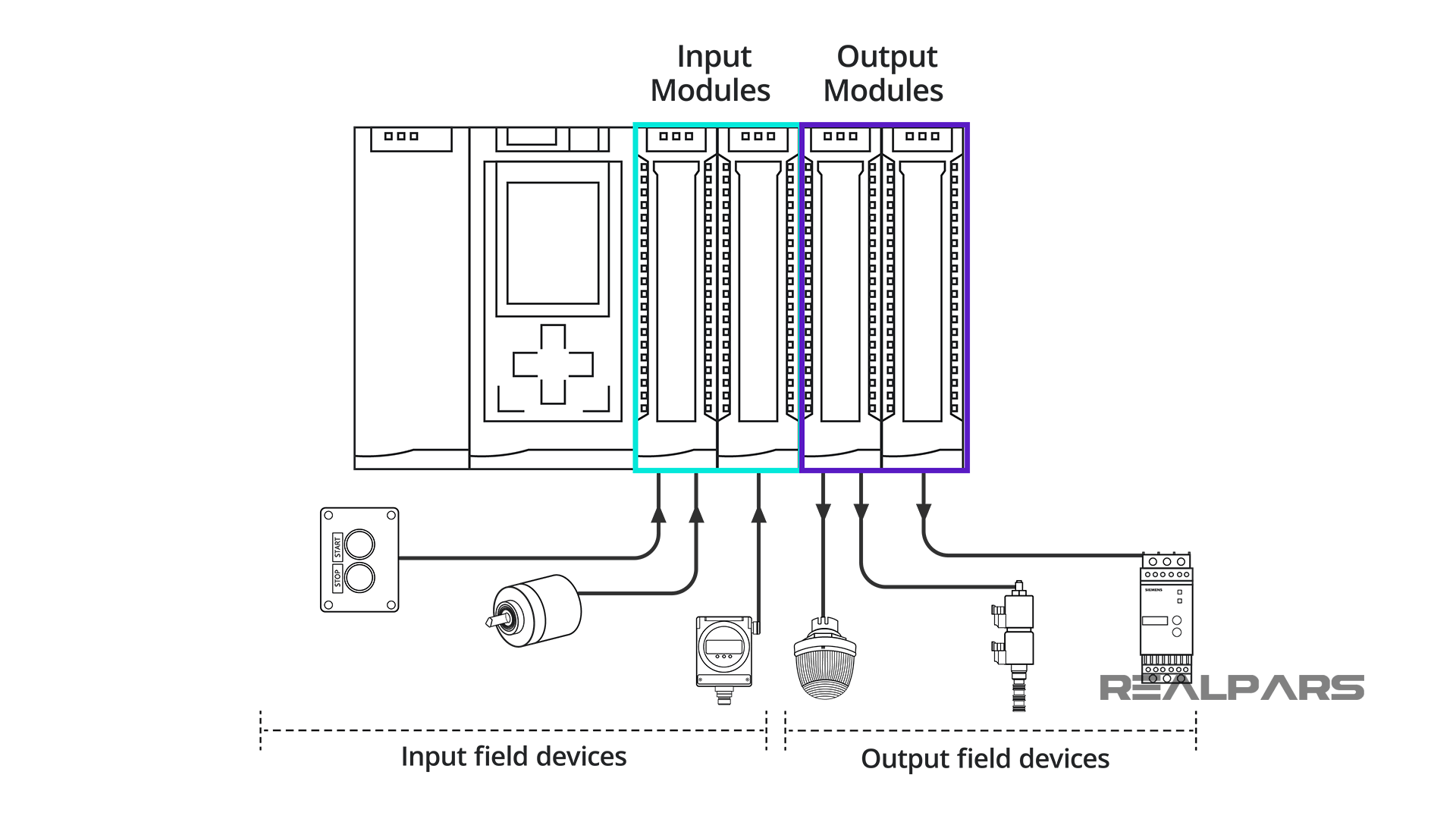
3) Processor
The Processor consists of the CPU (central processing unit) and memory.
The processor section makes decisions needed to observe and operate the field devices connected to the Input/Output modules.
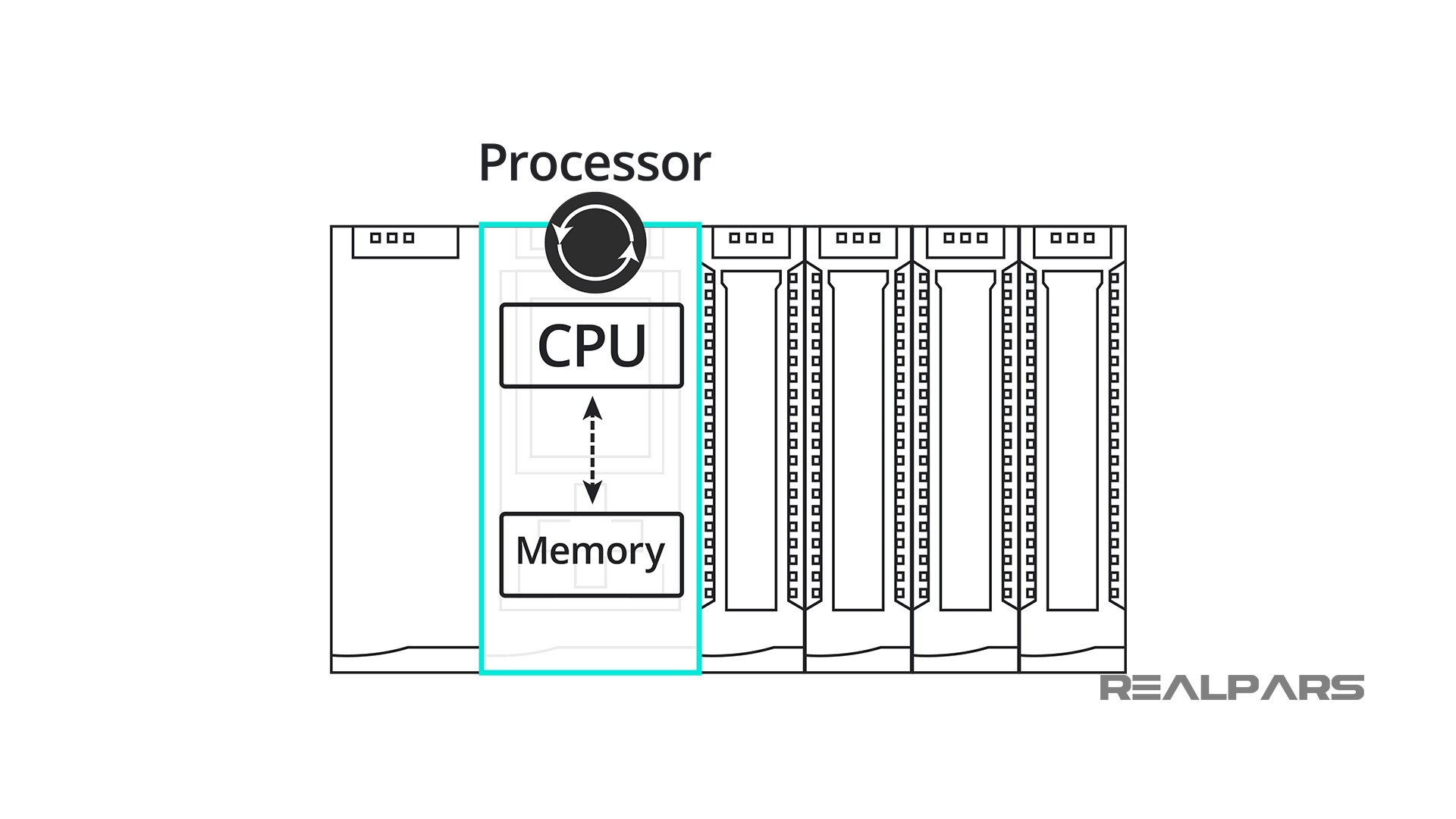
The decisions are based upon a user-created program saved in the memory. The memory also stores data representing the condition of all input field devices and contains the data telling the output field devices what to do.

4) Programming Device
The Programming Device in today’s industrial applications is usually a laptop or a desktop computer that facilitates the creation of decision-making programs destined for the PLC.
Examples of the programming software residing on the laptop are Studio 5000 for Allen Bradley PLCs or SIMATIC Step 7 for Siemens PLC’s.
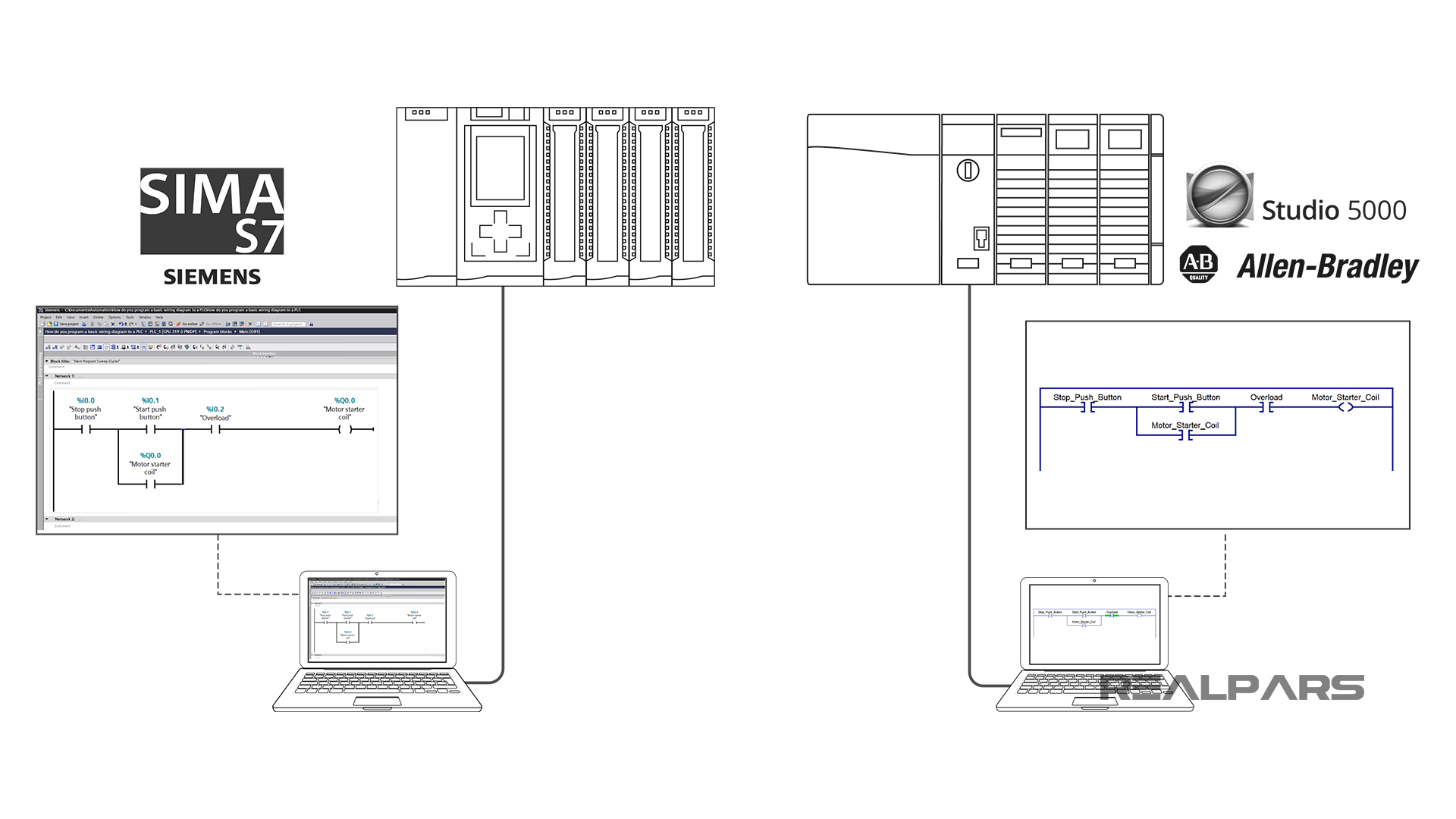
Summary
OK, let’s review…
– A PLC consists of a computer with several additional hardware pieces that are a part of it or can be attached to it at any time.
– Today’s PLCs have replaced much of the old-style hardwired circuitry in industrial applications, but many of the original physical devices are connected to the PLC.
– The Hardware components of a PLC are the Processor, the Power Supply, the Input/Output Modules, and a Programming Device.
– The AC mains connected Power Supply provides DC power for the PLC modules but not for field devices.
– The input/output modules are connected to digital or analog field devices.
– The Processor consists of the CPU (central processing unit) and memory.
– The Programming Device in today’s industrial applications is usually a laptop or a desktop computer.
You might want to review one of our other articles:
PLC Basics | Programmable Logic Controller
Want to Learn More?
If you would like to get additional training on how PLC works or a similar subject please let us know in the comment section.
Check back with us soon for more automation control topics.
Got a friend, client, or colleague who could use some of this information? Please share this article.
The RealPars Team
Learn from
industry experts
with a free 7-day trial, then $25/month


